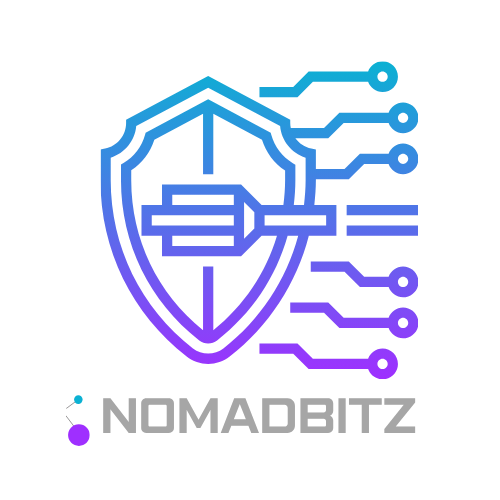Anúncios
modern leadership challenges shape how you lead in fast-moving markets, hybrid workplaces, and AI-driven environments in the United States today.
In 2024–2025 the context shifts: employee engagement is low, talent moves faster, and technology speeds decision cycles. Gallup shows roughly 20% engagement worldwide, and Korn Ferry reports that about 70% of employees who fear AI may leave or seek new roles. Forbes Coaches Council also flags AI anxiety among middle managers and the need for clear strategic vision.
This article is a practical, evidence-based list you can use to assess your situation and pilot small changes. Each section names a problem, offers moves you can test, gives examples, and lists simple metrics to measure progress. Start small, measure, iterate.
Expect people-first practices, ethical and transparent tech adoption, clear goals, and coaching habits that build trust and growth. Try one or two tactics with your team, review outcomes, and adapt. Leadership is practice, not a promise; steady experiments and open communication create durable results.
Why modern leadership challenges matter right now
Right now, low engagement and rapid tech shifts are forcing leaders to rethink how they support teams. Gallup shows only about 20% of employees are engaged, while 52% are watching or seeking new roles. Korn Ferry adds that roughly 70% of workers anxious about AI consider leaving.
Anúncios
That mix raises real risk for your business. Hybrid schedules, faster product cycles, and AI adoption strain communication and trust across organizations in the United States and beyond.
How this affects daily work
Near-term delivery competes with long-term growth. You will see managers juggling urgent goals and team development. The human side of AI and middle-manager adoption bottlenecks are practical pain points that need transparent talk and training.
Practical response
- Start small: pilot clearer goals and quick feedback loops.
- Use evidence-based moves and ethical tech policies to reduce confusion.
- Align communication, development, and training to real team needs.
Bottom line: act early with small, measurable pilots to protect trust, stabilize engagement, and buy time to scale what works.
Anúncios
Modern leadership challenges
You face a queue of pressing issues that reshape how teams work day to day. This section lists what to watch and how to run small tests that build trust and results.
From disengagement to AI transformation: the evolving list
Major categories: engagement, retention, hybrid work, conflict & inclusion, AI alignment, strategic vision, decision-making & delegation, change leadership, and sustainability.
How to use this listicle: assess, pilot, measure, iterate
Start with a quick assessment: pulse surveys, turnover signals, and skill gaps. Pick one or two priorities and run a 4–8 week experiment with clear goals.
- Specify simple metrics up front (participation, cycle time, feedback volume).
- Use phased plans, internal ambassadors, and feedback loops (KPMG-style).
- Provide accessible training and short debriefs to support learning (Forbes Coaches Council advice).
Keep changes modular: test small, share results with employees, and iterate. Above all, leaders must explain the why, expected benefits, and how you’ll evaluate progress.
Rebuilding engagement and culture in a low-trust environment
Rebuilding team energy starts with clear rituals and honest communication. Gallup finds only about 20% of employees are engaged worldwide. That gap matters for culture, performance, and retention.
Practical moves
- Recognition rituals: weekly wins, peer kudos, and a digital recognition board that makes contributions visible.
- Active listening: structured one-on-ones, open office hours, and short pulse surveys to capture voice regularly.
- Visible growth paths: personalized development plans, stretch assignments, and mentorship so members see real progress.
Example sequence to emulate
Launch a digital recognition board, co-create quarterly goals that tie tasks to purpose, then run biweekly pulse checks. Use comments to refine objectives and actions.
Metrics to watch
- Pulse survey trends and participation rates.
- Participation in rituals (posts, nominations, attendance).
- Ratio of constructive to neutral feedback over time.
In low-trust settings, model transparency: share meeting notes, explain tradeoffs honestly, invite questions, and highlight small authentic wins. Pair this with coaching and micro-training on benevolent communication to help your team sustain change.
“Small, consistent actions rebuild trust faster than grand gestures.”
Retaining talent amid high mobility and labor shortages
With half your workforce watching for new roles, retention needs a sharper playbook. Mobility and skill shortages mean you must keep critical capabilities inside your organization by investing in people-first development.
What to track: watch the percent of at-risk roles, time-to-fill internal postings, and participation in development programs. These signals tell you if pathways are working.
Practical solutions
- Create personalized career paths: maintain a skills inventory, offer targeted training, and hold quarterly career conversations.
- Launch internal mobility programs that post openings internally first and provide transition support for team members.
- Build mentoring pipelines to pair experienced members with emerging talent and speed on-the-job growth.
Partner with training firms or local colleges to build two skill academies where the market is thin. Improve onboarding to strengthen belonging in the first 90 days.
“Pilot mentoring in one function, measure a 6-month retention shift, then scale what works.”
Implementation path: start small, align projects to both business goals and career growth, and ask managers to recognize daily contributions to reinforce commitment.
Leading remote and hybrid teams without micromanaging
Keeping remote hybrid groups productive depends more on clarity than control. Set a simple foundation so your team knows what matters and how success looks.
Clarity first: shared KPIs, explicit roles, and documented norms
Create one shared document with team KPIs, role boundaries, and communication norms. Make it the go-to reference for goals and tasks.
Define response times and handoff steps to reduce friction across time zones.
Cadence that works: weekly progress reviews plus periodic in-person connection
Run a short weekly review focused on outcomes, blockers, and help needed. Add quarterly in-person sessions to strengthen bonds.
Tools and trust: collaborative platforms with lightweight check-ins
Use transparent task boards and async updates so you avoid status-chasing. Encourage brief coaching check-ins that protect autonomy and build trust.
Provide quick training videos and a help channel so all members can use tools effectively.
- End-week retros: what worked / what was hard / next step.
- Meeting hygiene: agendas, documented decisions, clear owners.
- Measure: delivery predictability, meeting ratings, and ritual participation.
Managing conflict, inclusion, and generational differences
Disagreements reveal gaps in roles, process, and trust—use them to improve how your team works. Name a simple, repeatable space where issues can be raised before they escalate.
Constructive conflict
Dialogue spaces and nonviolent communication
Create short, facilitated forums where members speak for two minutes and then reflect. Train teams in nonviolent communication so feedback stays about behaviors and impact, not personality.
Use professional mediation for stuck issues. Clarify decision rights and responsibilities to cut down on authority disputes.
Bias training, reverse mentoring, and measuring inclusion
Run unconscious bias workshops and pair reverse mentoring partners so younger and older employees trade digital skills and institutional knowledge.
- Normalize conflict as information with clear facilitation.
- Establish feedback norms: regular, respectful, behavior-focused feedback.
- Provide safe, confidential channels and explain follow-up steps to build trust.
Example cadence: quarterly inclusion metrics review, monthly learning circles, and a rotating facilitation role to build skills.
What to measure
- Conflict resolution cycle time and mediation outcomes.
- Participation in inclusion programs and reverse mentoring pairs.
- Qualitative shifts in team environment from experience surveys and focus groups.
“Treat conflict as data; create processes that let you learn and act.”
For evidence-based methods on resolving workplace disputes, see research on conflict resolution. These steps help you protect trust, develop skills, and keep your people focused on shared goals.
Aligning AI-driven innovation with human-centric values
Successful AI adoption starts with honest communication and practical training for managers. You must name the risks and explain the benefits in plain terms so employees can trust the process.
Address the human side of AI
Forbes notes middle managers often create adoption bottlenecks when they feel uncertain. Korn Ferry reports about 70% of employees who fear AI replacement consider leaving. Act early and clearly.
Responsible practices and oversight
- Set explainability standards and document decision criteria for each tool.
- Keep human judgment in sensitive areas like hiring and safety and make review steps explicit.
- Create an AI governance group with managers, tech experts, and employee reps.
Practical upskilling and pilots
Build targeted training on ethics, data limits, prompt design, and applied use cases for each function. Run small pilots with clear criteria and frontline feedback before you scale.
“Clear roles, staged rollouts, and open feedback turn anxiety into practical development.”
Measure adoption by tracking usage patterns, error rates, employee confidence scores, and customer impact. Reward teams that surface risks to reinforce a speak-up culture and protect trust as you move forward.
Clarifying strategic vision and purpose without greenwashing
Clear strategy turns everyday tradeoffs into steps that build lasting advantage. Translate big ideas into plain language so your team can see how today’s choices map to future goals.

Strategic alignment for short-term tradeoffs
Explain which short-term losses you accept and why. Use a one-page strategy brief and a visual roadmap to show timing and owners.
Purpose in practice
Link tasks to measurable outcomes: tie work to customer satisfaction, safety, or sustainability metrics. Set three clear goals with owners and timelines.
- Publish decision criteria for major initiatives to reduce cynicism.
- Hold quarterly purpose reviews where teams share concrete examples.
- Engage cross-functional teams and customers to test if the vision resonates.
“Model consistent choices that reflect stated values; credibility builds over time.”
Measure understanding with short surveys and cross-team checks. Track environmental and social metrics transparently and validate claims with recognized standards to avoid greenwashing.
Decision-making, time management, and confident delegation
You can make faster, better calls by using a repeatable process and clear roles. This cuts noise and lets your team focus on what matters.
Decision hygiene
Frame the question: state the boundary, review key data, gather stakeholder input, and document transparent tradeoffs.
Clarify who decides, who advises, and who executes so execution is quick and accountable.
Time tactics
Use a simple impact vs. urgency grid and set realistic deadlines. Protect focus وقت on calendars and run short daily scans to realign tasks with goals.
Delegation as development
Treat delegation as coaching and development. Assign larger tasks in stages, match work to strengths, provide resources, and agree checkpoints.
- Create a feedback loop after decisions and delegated work to capture lessons.
- Share examples of elevating problem-solving to the ٹیم to accelerate learning and engagement.
- Track cycle times for decisions, rework rates, and skills growth from delegated projects.
Practical payoff: these small routines give leaders clear confidence, reduce thrash, and build capacity across teams without abdication.
“Confident delegation is structure, not surrender.”
Change leadership that reduces resistance and builds buy-in
Change succeeds when people see a clear reason and simple steps to get there. Use a short playbook so your teams know what to expect and why the work matters.
Practical playbook
- Define the why: a one-page brief that links the change to concrete goals and daily work.
- Phase the rollout: pilot with key users, refine materials, then expand in waves.
- Choose ambassadors: respected peers who coach the team and bring feedback to the core group.
- Open communication: FAQs, short videos, two-way channels, and weekly change stand-ups during rollout.
- Just-in-time training: office hours and quick guides during critical windows to cut friction.
Measure, adapt, model
Measure adoption by tracking usage, sentiment, and performance tied to the goals. Share lessons learned openly and update the process based on evidence.
لیڈروں کو چاہیے ۔ model the new tools and behaviors so employees see the change in action.
“Pilot small, learn fast, then scale with clear feedback loops.”
Embedding sustainability into everyday operations
Turn high-level sustainability promises into clear, trackable actions the team can own. Embed goals in budgets and routine decisions so environmental targets shape daily work.
Start with measurement: pick practical metrics such as energy use, waste volume, and logistics emissions. Publish monthly results and show how small fixes cut costs and risk.
From claims to practice: measure impact, train teams, and celebrate verified wins
Train people on the ecological transition and link training to simple role changes that reduce impact without harming quality.
- Run cross-functional “green ops” sprints to test quick wins and report outcomes each month.
- Audit savings and use certified verification before you celebrate to avoid greenwashing.
- Bring suppliers into standards and data sharing so scope-related impacts improve.
Reward practical contributions: align recognition or small incentives to process improvements that lower waste and cut cost.
Communicate clearly: share outcomes, lessons learned, and next steps in plain terms. For a strategic approach, see a useful primer on making sustainability part of core strategy at sustainability as strategy.
“Track outcomes, verify claims, and make sustainability part of how you run the business.”
نتیجہ
Practical change grows from steady testing, honest feedback, and clear measures.
Pick one or two common leadership challenges you face—engagement, retention, remote hybrid clarity, AI ethics, or sustainability—and set a simple goal. Run a short pilot with a small group, track a couple of metrics, and share results with your team.
Keep learning: treat each test as development for you and your members. Use open communication, routine feedback, and clear process to build trust over time.
Repeat, adapt, and scale what works. This steady approach helps leaders turn insights into real growth for people, teams, and the business.



